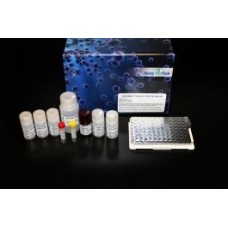LILRB1 antibody [GHI/75] (PE)
GTX00517-08
ApplicationsFlow Cytometry
Product group Antibodies
TargetLILRB1
Overview
- SupplierGeneTex
- Product NameLILRB1 antibody [GHI/75] (PE)
- Delivery Days Customer9
- Application Supplier NoteFACS: 10 microl reagent / 100 microl of whole blood or 106 cells in a suspension. *Optimal dilutions/concentrations should be determined by the researcher.Not tested in other applications.
- ApplicationsFlow Cytometry
- CertificationResearch Use Only
- ClonalityMonoclonal
- Clone IDGHI/75
- ConjugateRPE
- Gene ID10859
- Target nameLILRB1
- Target descriptionleukocyte immunoglobulin like receptor B1
- Target synonymsCD85J, ILT-2, ILT2, LIR-1, LIR1, MIR-7, MIR7, PIR-B, PIRB, leukocyte immunoglobulin-like receptor subfamily B member 1, CD85 antigen-like family member J, Ig-like transcript 2, immunoglobulin heavy chain variable region, leucocyte Ig-like receptor B1, leukocyte immunoglobulin-like receptor, subfamily B (with TM and ITIM domains), member 1, monocyte/macrophage immunoglobulin-like receptor 7, myeloid inhibitory receptor 7
- HostMouse
- IsotypeIgG2b
- Protein IDQ8NHL6
- Protein NameLeukocyte immunoglobulin-like receptor subfamily B member 1
- Scientific DescriptionThis gene is a member of the leukocyte immunoglobulin-like receptor (LIR) family, which is found in a gene cluster at chromosomal region 19q13.4. The encoded protein belongs to the subfamily B class of LIR receptors which contain two or four extracellular immunoglobulin domains, a transmembrane domain, and two to four cytoplasmic immunoreceptor tyrosine-based inhibitory motifs (ITIMs). The receptor is expressed on immune cells where it binds to MHC class I molecules on antigen-presenting cells and transduces a negative signal that inhibits stimulation of an immune response. It is thought to control inflammatory responses and cytotoxicity to help focus the immune response and limit autoreactivity. Multiple transcript variants encoding different isoforms have been found for this gene. [provided by RefSeq, Jul 2008]
- Storage Instruction2°C to 8°C
- UNSPSC12352203


![FACS analysis of human peripheral blood using GTX00517 LILRB1 antibody [GHI/75].](https://www.genetex.com/upload/website/prouct_img/normal/GTX00517/GTX00517_20191025_AP_006_54_w_23053121_111.webp)

